30 Best Lebanese Foods (with Pictures!)
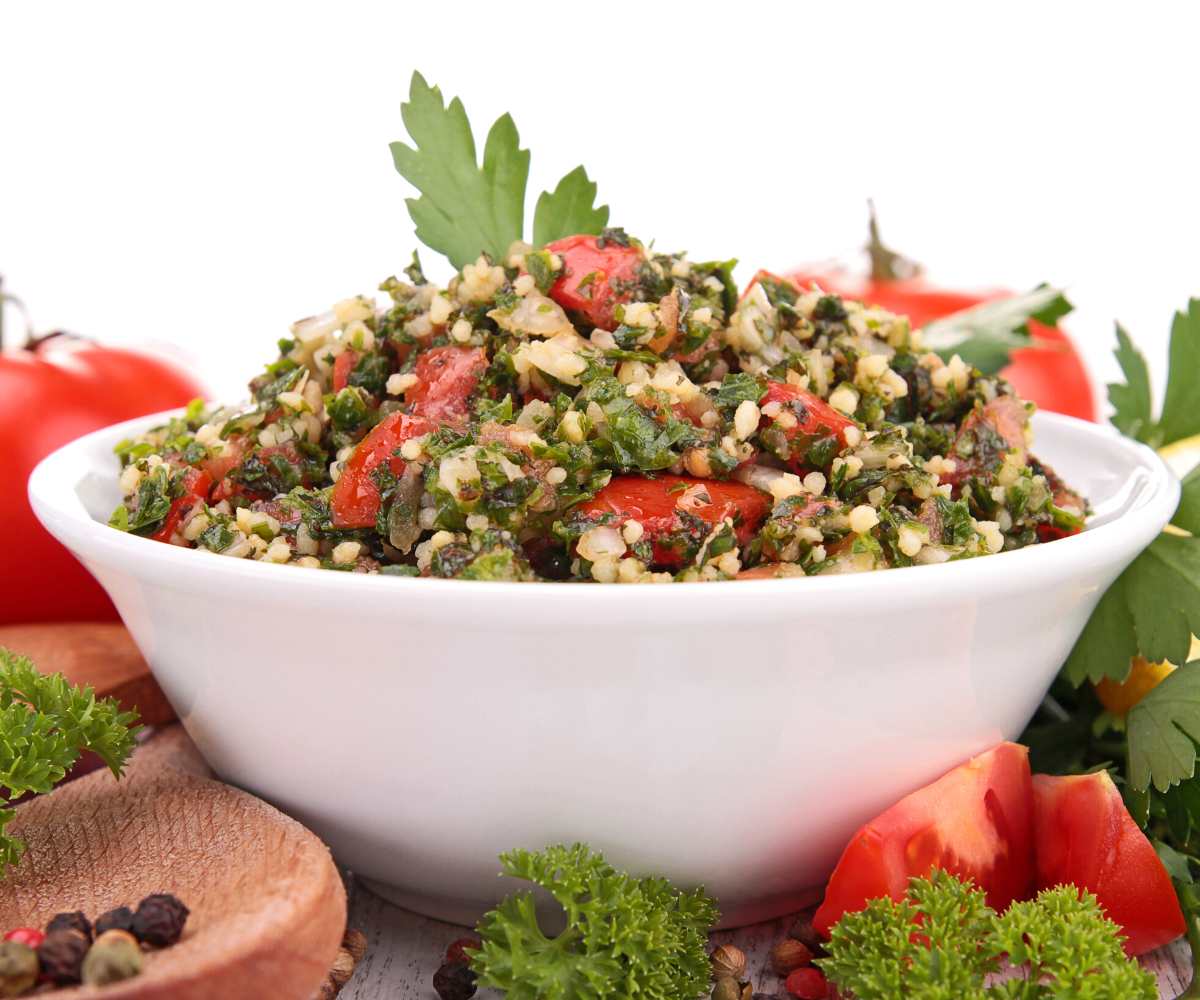
If there’s one thing everyone should know about the Lebanese, it is that they like to party, and eat!
Lebanese people are family-oriented and value every meal as time spent together. No table is complete without Grandpa sitting at one end of the table and the eldest son or daughter sitting at the other. Every meal is a whole dining experience with its own set of entrees, main course, and dessert.
In Lebanese cuisine there’s a recurring theme of garlic, lemon, fresh herbs, and high-quality olive oil found in most dishes, as we’ll see throughout this article.
Lebanese cooks make use of the locally-grown ingredients to give every dish its own Lebanese twist. Characteristic flavors include za’atar (a blend of dried herbs and spices), pine kernels (or snawbar), black olives, sumac, pomegranate molasses (debes al rumman), and many others.
The main meat is lamb, which is used in many different forms, and the unique taste of its fat gives any dish the Middle Eastern twist it needs.
The freshness and quality of ingredients is highly valued. Most Lebanese people can trace their roots to a certain village, and many foods and ingredients they eat originate from these villages.
The beautiful villages in Lebanon are still well-preserved, and many houses with typical Lebanese architecture have easy access to the flat roof since villagers spend a lot of time in the sunny summer days drying fruits, herbs, and leaves to prepare what we call a “mounet” for the coming season. The mounet consists of pickled vegetables, olive oil, jams, preserved lamb (kawarma), dried herbs and fruits to maintain the flavors all year round.
Many Lebanese foods are vegan since back in the old days people could not afford to buy meat. So Lebanese peoeple employed their creativity, applying it to easily accessible beans and wheat, and came up with a whole gastronomic culture packed with distinctive flavors.
Typical Lebanese Breakfast
As mentioned before, Lebanese people enjoy spreads of food that can be shared with the family rather than one specific item. I will take you through the experience of a typical Lebanese breakfast spread from start to finish:
1. Manakish

Manakish is perhaps the most popular Lebanese breakfast for when you are on the go. It is a piece of dough rolled out into a circle and stuffed with cheese, za’atar, meat, keshek (fermented yogurt with tomato paste and sesame seeds), and many other ingredients in endless combinations.
It is then wrapped as a sandwich and either stuffed with veggies, eaten on the side, or, if really late for work, on its own. Manakish can also be prepared in miniature bite-sized pieces for buffets and children’s birthday parties, providing delicious and satisfying nibbles. Dough that’s rolled out thin is called “Sajj”, a crispy and more delicate version of manakish.
2. Foul Mdammas

Foul mdammas and balila are the staple of a Lebanese breakfast spread. Foul are cooked fava beans with lemon, cumin, and olive oil as the main flavors. It is usually eaten with traditional pita bread, red radishes, mint leaves, tomatoes, and cucumbers on the side.
3. Balila

Balila is similar to foul but prepared with steamed chickpeas instead of fava beans. It is served with the same side dishes as foul. Some people even mix both foul and balila – it is delicious either way. Both dishes are deliciously filling vegan breakfasts that will not disappoint.
4. Labneh
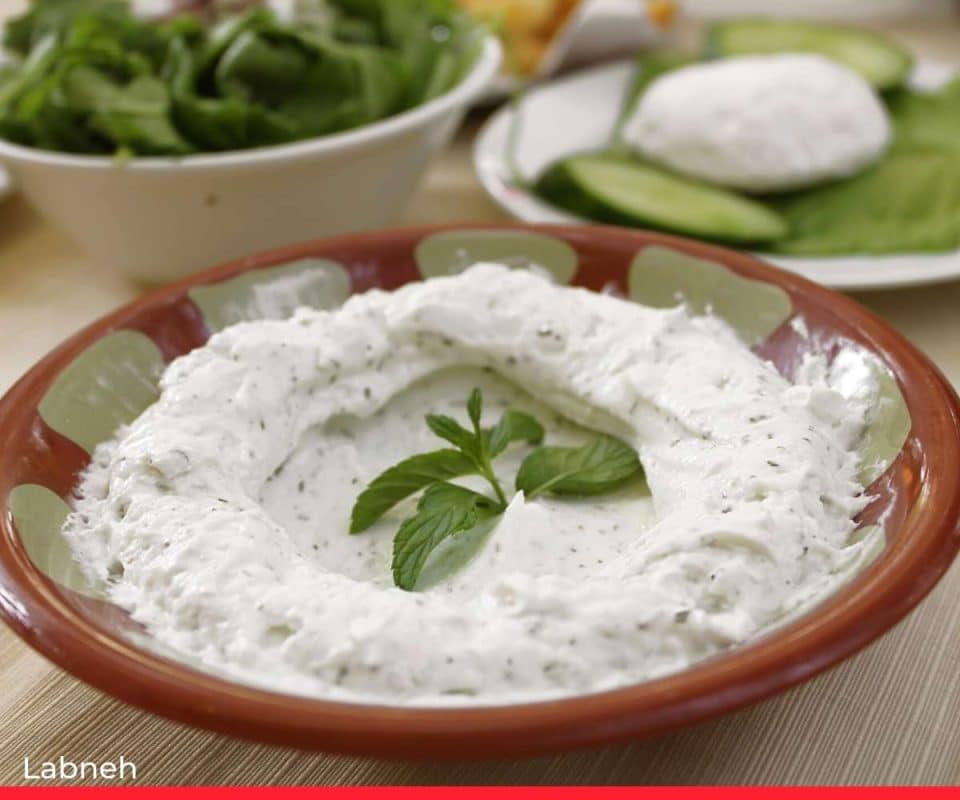
Lebanese cooks go to the local grocery store daily and buy labneh, milk, and eggs. Labneh is an essential ingredient that is always in stock in any home.
This strained yogurt is served as a dip or spread, and it’s an indispensable part of a typical Lebanese breakfast. Labneh is drizzled with olive oil and is mainly served with vegetables such as tomatoes, cucumbers, and olives. It is also commonly eaten in bites or sandwiches.
Labneh can also be part of lunch, where it is served mixed with minced garlic, dried mint leaves, and some salt to create a delicious palette cleanser with a garlic twist.
5. Eggs

These are not your typical eggs. Lebanese spreads include a variety of eggs served with the Lebanese touch. These eggs are typically served sunny side up in a fokhar (clay) frying pan, fried with olive oil and seasoned with salt, pepper, and sumac.
Sumac provides the eggs with an unmistakably sour and flavorful kick. The fokhar frying pan gives the perfect level of heat that leaves the eggs with desired crispy edges and a runny yolk.
6. Kawarma

Traditional eggs are also prepared with kawarma, which is preserved lamb meat in its fat. In the fokhar frying pan, the meat is scooped out when the fat has melted away from it. Eggs are then added and can be left sunny side up or scrambled. This fatty and filling meal is often accompanied with labneh to cleanse the palette afterwards.
7. Knafe

Knafeh is usually prepared in large trays layered with Akkawi cheese on the bottom and topped with semolina dough or phyllo dough. It is then soaked with kater (syrup flavored with rose water). It is served on bread (kaak) and soaked with even more kater.
This sweeter (definitely not healthier) Lebanese breakfast is also eaten as a dessert. It has a great combination of textures from the cheese, semolina dough, and kaak as well as a fantastic flavor profile due to the combination of the sweet syrup and salty cheese.
Breakfast is usually finished off with a few bites of jam, starting the day on a sweet note.
Lebanese Lunch Dishes
8. Grill Mix

Also known as “mashewe”, this is the star of every weekend family lunch. It consists of kebabs made from chicken (taouk) and kafta kebab. It is usually prepared on a charcoal grill, where some also add vegetables such as zucchini and eggplants. It is served with “mezza”, also known as Lebanese appetizers, that compliment the cooked meats. The mezza consists of salads, dips, and finger foods.
9. Lebanese Hummus

The most famous Lebanese mezza is the hummus dip made from pureed chickpeas mixed with lemon juice and tahini. This delicious dip is topped with olive oil, roasted pine nuts, and sometimes meat cooked with pomegranate molasses. It is highly versatile and perfectly compliments the meat in the grilled mix.
10. Fattouch

Fattouch is a Lebanese salad that has a base of lettuce, radish, thyme leaves, green pepper, tomatoes, and cucumbers. What makes it special is the sauce that is made with lemon, oil, sumac, and pomegranate molasses. It is topped with fried pita bread pieces on top, or toasted pita bread for a healthier option.
11. Tabbouleh
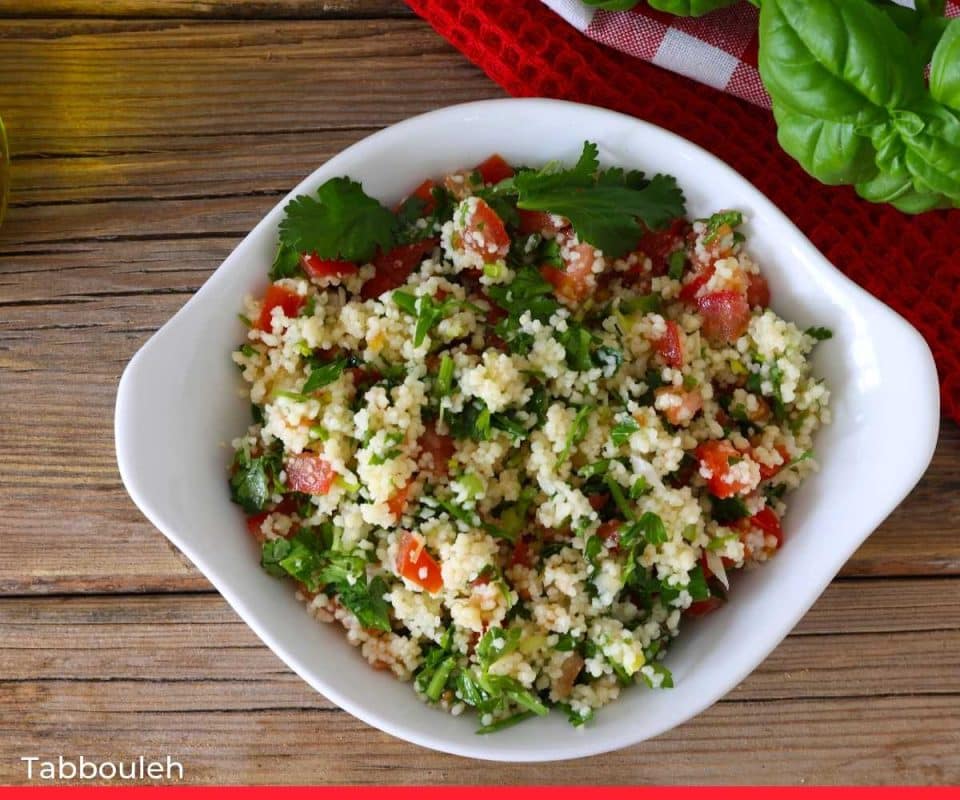
Tabbouleh is a chopped salad with a base of parsley and finely chopped tomatoes and onions. It is another staple that is bursting with freshness, and it’s often served next to hummus in a Lebanese spread. Its lemon-oil sauce seeps through and adds sharpness to the rest of the items in your plate.
12. Kibbeh Nayye

Kibbeh nayye is not for the faint of heart. This dish consists of minced raw lamb meat mixed with burgul and garnished with mint, olive oil, and green onions. Scooped with pita bread perhaps followed by a sip of Arak, kibbeh nayyeh is sure to make your taste buds do the dabke! (In other words, such is the pleasure you’ll experience, you’ll want to do a traditional Lebanese folk dance!)
13. Sambousek

A bite sized, deep fried, crescent shaped pastry that packs quite a punch. Sambousek is prepared by stuffing a rich dough with ground meat, tomatoes, and onions. This Lebanese gem barely hits the table before the entire family has eaten every morsel!
14. Kebbe

Like the people of Lebanon, kebbe come in all shapes and forms, but at heart it is made out of a combination of ground meat, onions, and grains. Whether in a pan or shaped as small balls, kebbe will always be the chef’s go-to dish to feed a hungry family.
15. Batata Harra

Lebanese “French fries”, batata harra is cut into cubes and fried then seasoned with cilantro, garlic, lemon, and chili flakes. This spicy dish has a more kid-friendly version that is not spicy, so as to satisfy everyone at the table
16. Shanklish

Shanklish is a fermented ball of cheese that has the same feel as blue cheese, but is milder. It is served crumbled and topped with fresh minced onions and tomatoes. It is then drizzled with olive oil and dried herbs. Shanklish is a refreshing appetizer that you can eat on its own with a piece of freshly baked pita bread.
Aside from the appetizers of the Middle East, there are many popular main course items that retain a Middle Eastern hint.
17. Falafel
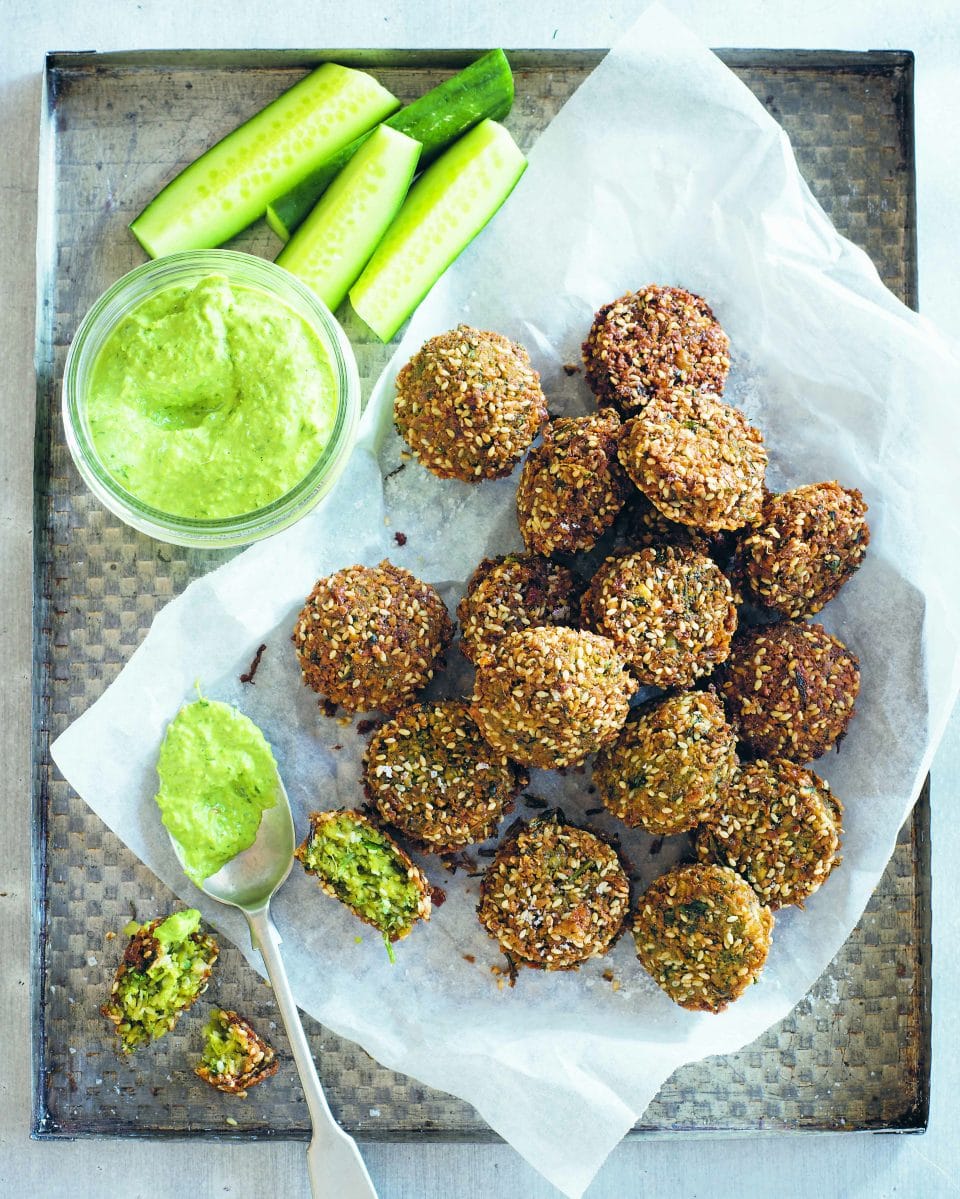
The globally-popular falafel is a vegan patty made from different beans. It is traditionally fried in oil and served in a pita bread with tartar sauce, tomatoes, radishes, and parsley. These golden nuggets are a go-to if you’re stuck in traffic, or out on a long sightseeing tour and craving a filling, delicious sandwich.
18. Mjaddara

So simple, yet so much more than the sum of its parts, mjaddara is a dish based on lentils and rice that’s topped with fried crispy onions. Mjaddara is a useful home staple given its few and inexpensive ingredients, yet it can also be modified and served with a simple salad, making it also very versatile. Some people even eat it as a sandwich in pita bread.
19. Kousa Mehshe

The perfect meal for a cold winter day, kousa squashes richness into squash. Zucchini are cored and stuffed with rice, meat, and tomatoes. Kousa is cooked in a tomato-based broth that envelops every bite with depth and true Lebanese flavors.
20. Waraa Eenab

Waraa eenab or vine leaves are a personal favorite of mine, also known as “Lebanese sushi”. They feature a filling of rice and meat wrapped in vine leaves. The filling can be based on meat or chickpeas for a more vegan-friendly option. It is best eaten with a squeeze of lemon juice and a side of laban (yogurt).
21. Fattet Hummus

Fattet hummus is a similar dish to balila but mainly eaten at lunch. It has the balila base but is mixed with yogurt, garlic, some tahini, and mint leaves. It is best served hot with a dousing of pine nuts fried in olive oil. It is also topped with crispy pita bread.
22. Shawarma

Shawarma is a popular street food that is widely available on almost every corner. This quick, cheap, and on-the-go sandwich will never disappoint.
Its base is either chicken or meat shaved off a vertical rotisserie into thin, crispy yet succulent strips packed with flavor. It is served on pita bread with a strong garlic paste spread on it. It is then topped with lettuce, tomatoes, parsley, and white onions sprinkled with sumac.
Lebanese Desserts
This set of sweets follows every meal, accompanied by different jams and seasonal fruits. These unique desserts are a sweet spot for every Middle Eastern abroad. Many are also served on special occasions as festive delicacies.
23. Lebanese Baklava

Lebanese baklava truly represents a labor of love in every single piece. A phyllo dough stuffed with nuts and drenched in a sugar sauce, then cut and formed into tiny different shapes that, once baked, create a unique experience from presentation to texture.
Baklava is usually given as a gift to mark special occasions such as graduations.
24. Meghle

Meghle is made up of ground rice, cooked and seasoned with coriander, cinnamon, and sugar. This dessert is typically served with shaved coconut flakes on top and different nuts such as pistachios and pine kernels. It is traditional to make meghle to celebrate the birth of a new healthy child and share it with the whole family, wishing the new arrival a life of health and success.
25. Sfouf

Both sfouf and namoura have a similar base of a cake that’s cut into diamonds and topped with halved almonds and sesame seeds. Namoura is known for its unique color that is derived from turmeric.
26. Namoura

Namoura is similar to sfouf but instead of wheat flour, semolina flour is used, and then drenched with hot kater (sugar syrup). This sticky cake is a luscious and very sweet dessert that is definitely a Lebanese favorite.
27. Halva
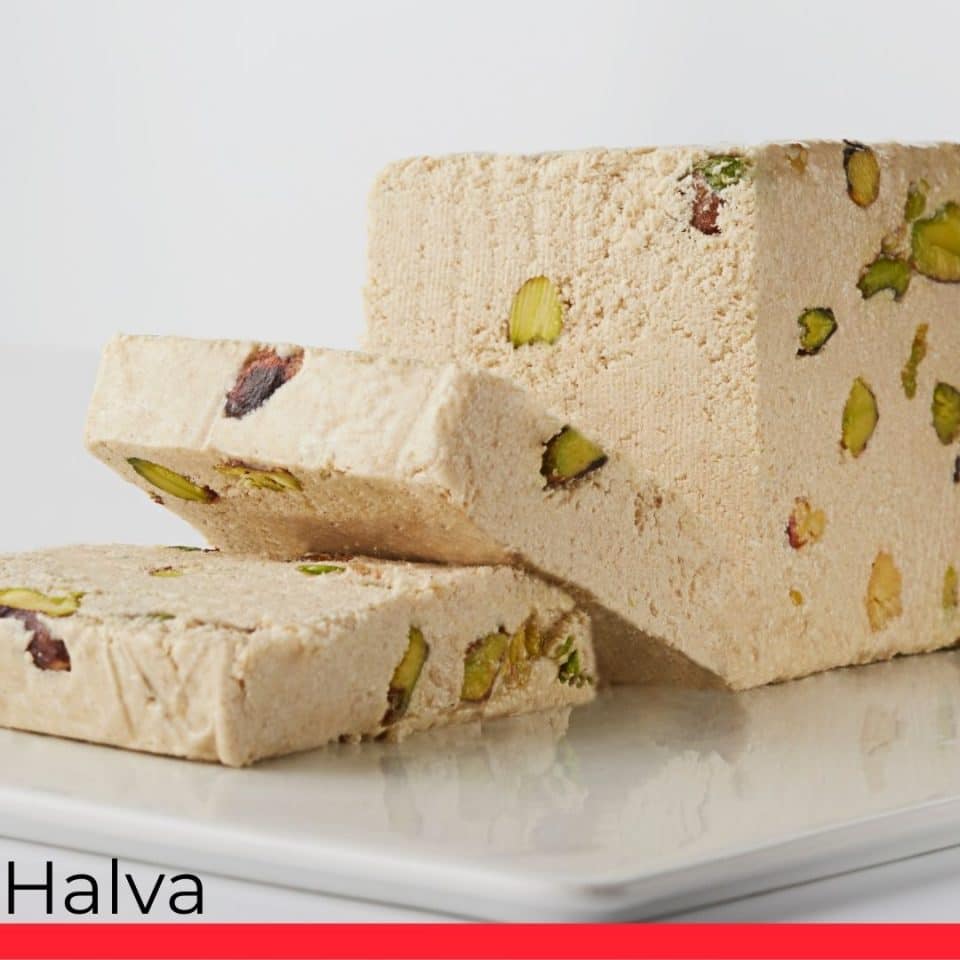
This delicious Middle Eastern dessert is a base of tahini (or flour) and sugar, baked to create this unique crumbly texture. Halva is popularly eaten on its own, with pistachios, walnuts, though recent variations are swirled with chocolate. Read more about delicious Lebanese desserts in our round-up of the most popular 15 desserts in Lebanon.
Lebanese Drinks:
Alongside every meal, there are some traditional distilled and syrupy drinks that make the perfect accompaniment.
28. Arak

Arak is a distilled mix of anis and grape juice. As it’s highly alcoholic it is rarely drunk neat, rather a ratio of 1:1 Arak and water is preferred.
When mixed, the clear liquid turns into a beautiful white drink that is best served in small measures, packed with ice. There is nothing better than eating kebbe nay with arak on a hot summer day, as it supposedly cleans out the bacteria in the raw meat!
In communities where alcohol isn’t forbidden, you may find Grandpa sneaking some diluted sweet Arak to the children to start to build up their alcoholic tolerance!
29. Sharab el Toor

Sharab el toot, also known as blackberry syrup, is a sweet and refreshing drink traditionally made in Lebanese villages. The fresh juice is reduced, stored, and sold in bottles and jugs. This refreshing summer drink is perfect in the afternoon, along with some biscuits, while you enjoy the sunset and a chat with friends.
30. Jallab

Jallab is another syrup, this time made of carob, rose water, and dates. It’s prepared with water and crushed ice, then topped with pine nuts and pistachios. This delicious, sweet drink is also served on fresh snow at the beginning of the winter season (yes, it snows in Lebanon!). This is an irresistible drink that few can resist – a unique experience that you won’t have tasted before.
We hope that our tour has made you want to explore more foods from this fascinating region! Everyone should definitely give some of these incredible Lebanese foods a shot at least once in their life. Have you noticed that many of these dishes are also perfect for vegans since they do not contain any meat or dairy products?
Happy eating!
Do you have any other suggestions for wonderful Lebanese dishes that you could share with our community? Leave you comment below – we always love your feedback!
Related: Most Popular 15 Lebanese Desserts


